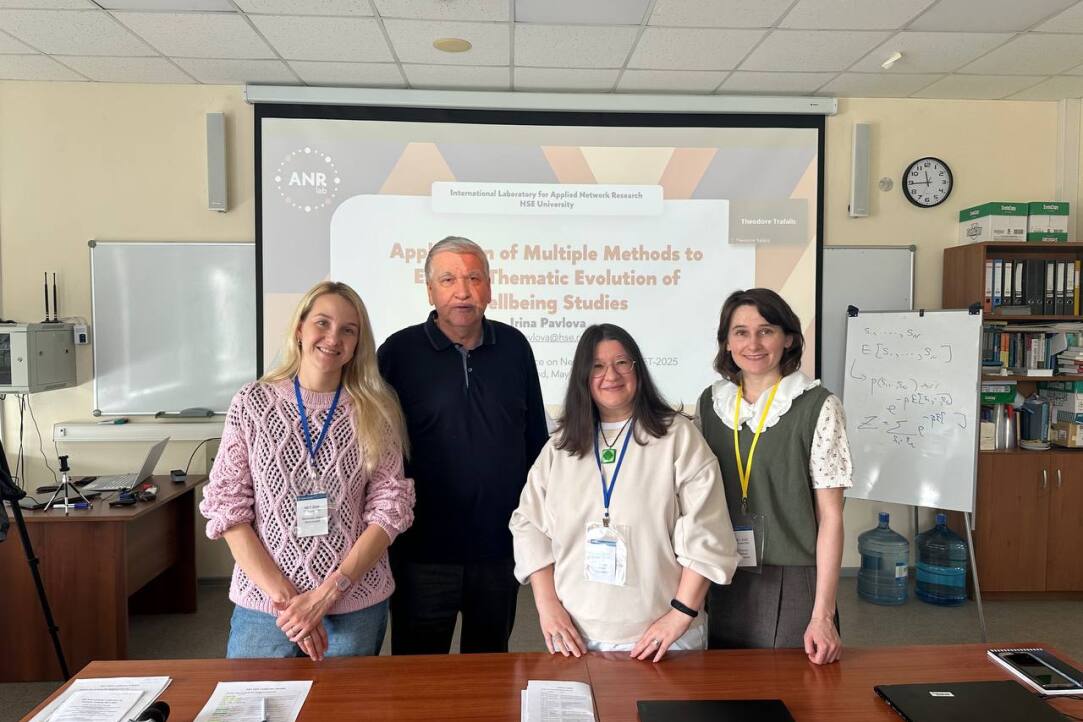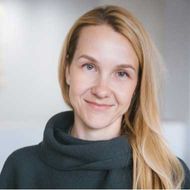ANR-Lab at NET-2025

On May 19-20, the 15th International Scientific Conference on Network Analysis (NET-2025) was held in Nizhny Novgorod. The event was organized by the team from the Laboratory of Algorithms and Technologies for Network Structure Analysis at the National Research University Higher School of Economics (HSE). The conference included presentations focused on the analysis of complex networks, machine learning, deep learning, and the application of network methods to study social processes.
At the sessions dedicated to social network analysis, the team of the International Laboratory for Applied Network Research presented the following papers:
- Daria Maltseva, "Enhancing Bibliometric Network Analysis with AI-Powered Tools." The report focuses on the potential of artificial intelligence (AI) in bibliometric network analysis. The study explores the stages involved in creating and processing bibliometric networks, as well as the capabilities of AI in automating data collection, analyzing co-authorship and co-presence networks, and forecasting trends in scientific disciplines.
- Apollinaria Ermolaeva and Irina Pavlova, "Bibliographic Coupling Networks of Russian Sociologists: Identifying Academic Communities and Fragmentation Pattern." The study analyzes the fragmentation of the Russian sociological community through bibliographic coupling networks. Utilizing data from the Web of Science, the authors tested the hypothesis regarding the influence of authors' affiliations and geographical locations on the structure of these networks.
- Irina Pavlova, "Application of Multiple Methods to Explore Thematic Evolution of Wellbeing Studies." The paper presents a study on the thematic evolution of the interdisciplinary field of well-being research, utilizing three complementary methods applied to Web of Science data: keyword presence network analysis, semantic network analysis, and topic modeling.
- Natalia Matveeva, "Co-authorship Network Structures of Universities with Different Ages and Statuses." Natalia compared the co-authorship network structures of leading mature universities, leading young universities, and catch-up universities. The results indicated that universities of varying ages and statuses exhibit distinct patterns of scientific collaboration.
- Daniil Kovalev and Daria Dunaeva (Tomsk State University), "Multimodal Networks for the Analysis of the Russian Labor Market." The study illustrates the application of multimodal networks in labor market analysis. Utilizing data from the RosNavyk platform, the authors constructed bipartite graphs and proposed a technique for creating unimodal networks using the generalized Jaccard measure for weighted graphs.
The conference proved to be genuinely warm and welcoming. We extend our gratitude to the organizers and all participants for the engaging discussions and inspiring ideas. We eagerly anticipate future meetings!

For me, this was the first large-scale conference on network analysis. Although I felt a bit nervous, everything went smoothly; my colleagues were friendly, and the atmosphere was inspiring. I particularly appreciated how the conference integrated advanced mathematical developments in graph theory with practical applications of network analysis to social processes.

This marks the 15th conference organized by colleagues from the LATAS laboratory, and it is the second time that my colleagues and I have had the opportunity to participate in person in Nizhny Novgorod. It is gratifying that the presentations from our laboratory team this year occupied nearly two full conference slots! Meeting and conversing with the head of the laboratory, Professor Valery Aleksandrovich Kalyagin, the scientific director, Professor Panos M. Pardalos, and their colleagues, as well as other conference participants, was incredibly valuable. I would like to highlight the particularly friendly atmosphere of the conference, which makes you eager to return!
